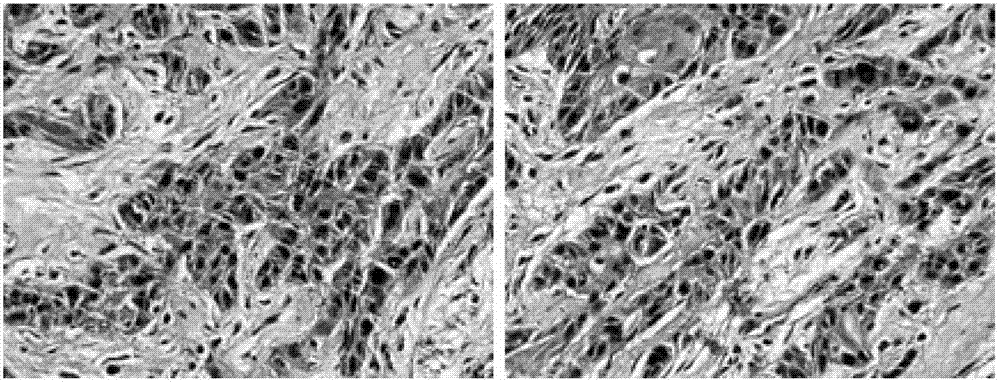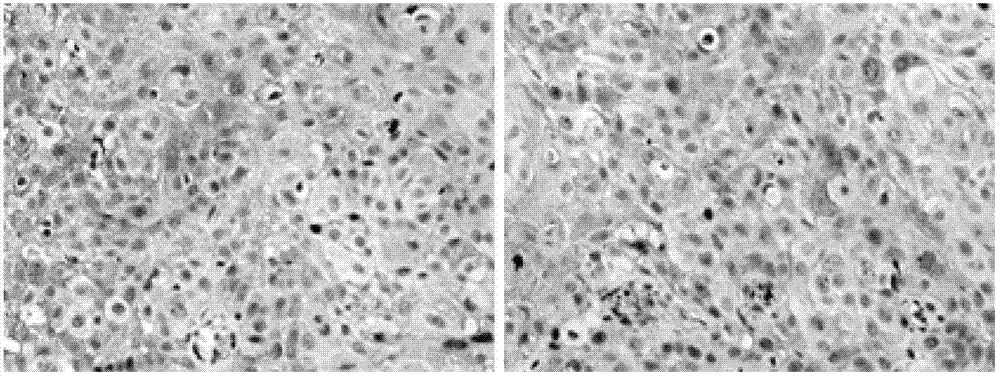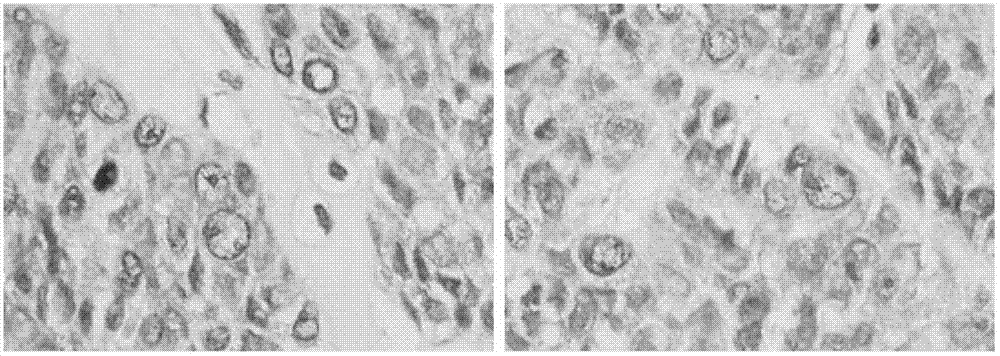Application of esophageal squamous cell carcinoma primary tumor strain CH-H-1
A technology of CH-H-1 and esophageal squamous cell carcinoma, which is applied in the application field of CH-H-1, a primary tumor strain of esophageal squamous cell carcinoma, to achieve the effects of high metastatic potential and stable traits
- Summary
- Abstract
- Description
- Claims
- Application Information
AI Technical Summary
Problems solved by technology
Method used
Image
Examples
Embodiment 1
[0027] 1. Establishment of primary esophageal squamous cell carcinoma xenograft tumor lines
[0028] (1) Experimental animals: NOD / SCID mice, 4-6 weeks old, male or female, were purchased from the Experimental Animal Center of Second Military Medical University.
[0029] (2) Tumor tissue: Fresh esophageal tumor tissue specimens were obtained from a 53-year-old male patient with stage IIIa esophageal squamous cell carcinoma who underwent surgery in the Department of Thoracic and Cardiovascular Surgery, Changhai Hospital Affiliated to Second Military Medical University in January 2007.
[0030] (3) Tumor formation and passage expansion of primary tumor xenograft:
[0031] ①NOD / SCID mice were pretreated with cobalt-60-γ-ray irradiation 1 day before inoculation, and the irradiation dose was 2.5Gy / mouse.
[0032] ②The mice were anesthetized by intraperitoneal injection of pentobarbital sodium (0.05mg / g body weight), and the primary esophageal squamous cell carcinoma tissue was cut...
PUM
 Login to View More
Login to View More Abstract
Description
Claims
Application Information
 Login to View More
Login to View More - R&D
- Intellectual Property
- Life Sciences
- Materials
- Tech Scout
- Unparalleled Data Quality
- Higher Quality Content
- 60% Fewer Hallucinations
Browse by: Latest US Patents, China's latest patents, Technical Efficacy Thesaurus, Application Domain, Technology Topic, Popular Technical Reports.
© 2025 PatSnap. All rights reserved.Legal|Privacy policy|Modern Slavery Act Transparency Statement|Sitemap|About US| Contact US: help@patsnap.com



